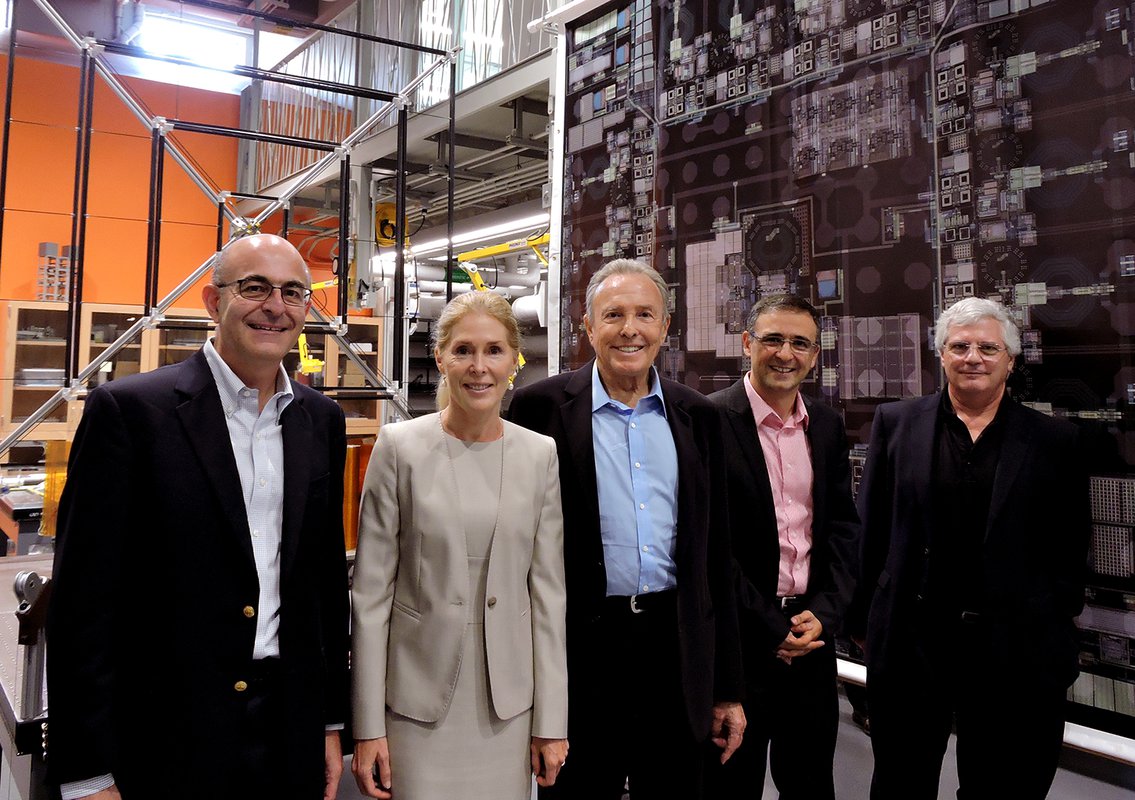Space solar power project got off the ground with billionaire's $100 million donation

Not every billionaire who's interested in space is building rockets.
You've surely heard of Elon Musk, Jeff Bezos and Richard Branson, whose companies have all launched people to the final frontier recently. But you may not know about Yuri Milner, the Russian-born tech investor who's putting hundreds of millions of dollars toward the search for alien life. Or Donald Bren, who may have helped seed an off-Earth energy revolution.
In 2013, the California Institute of Technology (Caltech) in Pasadena established the Space-based Solar Power Project (SSPP), which is developing hardware to harvest solar energy in orbit and beam it to Earth for use down here.
Related: Solar power stations in space could be the answer to our energy needs
Such tech, if fully realized and implemented on a large scale, would be game-changing, project team members said.
"Solar energy is the world's most abundant energy resource," SSPP researcher Harry Atwater, a professor of applied physics and materials science at Caltech, said in a statement.
"However, sunlight is intermittent at the earth's surface," Atwater said. "This ambitious project is a transformative approach to large-scale solar energy harvesting for the Earth that overcomes this intermittency and the need for energy storage, since sunlight shines continuously in space."
Breaking space news, the latest updates on rocket launches, skywatching events and more!
The SSPP got up and running nearly a decade ago thanks to an anonymous donation of more than $100 million. On Tuesday (Aug. 3), Caltech announced where the money came from — Bren and his wife, Brigitte.
"I have been a student researching the possible applications of space-based solar energy for many years," Bren, a real estate mogul who chairs the Irvine Co. and is a member of the Caltech Board of Trustees, said in the same statement. "My interest in supporting the world-class scientists at Caltech is driven by my belief in harnessing the natural power of the sun for the benefit of everyone."
The Brens have no financial stake in the SSPP or any technology that it develops, project team members said.
"It shows the magnitude of the generosity," SSPP co-director Ali Hajimiri, a professor of electrical engineering and medical engineering at Caltech, said in the same statement, which the university posted on Tuesday. "They really want to change the world and truly see this as an opportunity to make a lasting difference for the planet, while generating a broad range of novel technologies with impact in many areas such as wireless power, communications and sensing."

The SSPP has developed technology-demonstrating prototypes that convert sunlight to radio-frequency microwave energy, then transmit this usable power wirelessly in a steerable beam. The project plans to perform its first space test of such gear in early 2023, Caltech representatives said in the statement.
The Caltech group isn't the only one trying to get space-based solar power up and running. For example, the U.S. Air Force plans to launch a power-beaming experiment to orbit in 2024. And the Photovoltaic Radio-frequency Antenna Module Flight Experiment (PRAM-FX) is already zooming around Earth aboard the U.S. Space Force's robotic X-37B space plane.
PRAM-FX, which was developed by the U.S. Naval Research Laboratory, is a 12-inch-wide (30.5 centimeters) square tile designed to harvest solar energy and convert it to microwave power, allowing researchers to gauge the efficiency of that process.
This latest mission of the X-37B, the sixth for the space plane program overall, launched in May 2020. It's unclear when the winged vehicle will come down; details of X-37B missions, including the identity and purpose of most of its payloads, tend to be classified.
Mike Wall is the author of "Out There" (Grand Central Publishing, 2018; illustrated by Karl Tate), a book about the search for alien life. Follow him on Twitter @michaeldwall. Follow us on Twitter @Spacedotcom or Facebook.

Michael Wall is a Senior Space Writer with Space.com and joined the team in 2010. He primarily covers exoplanets, spaceflight and military space, but has been known to dabble in the space art beat. His book about the search for alien life, "Out There," was published on Nov. 13, 2018. Before becoming a science writer, Michael worked as a herpetologist and wildlife biologist. He has a Ph.D. in evolutionary biology from the University of Sydney, Australia, a bachelor's degree from the University of Arizona, and a graduate certificate in science writing from the University of California, Santa Cruz. To find out what his latest project is, you can follow Michael on Twitter.
